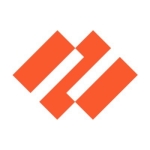What is our primary use case?
We use it in our company for threat detection. My company is into manufacturing, and our IT support is within premises. We don't do client services.
It is a SaaS solution. It is not supported on-premises. The deployment that we have is purely cloud-based.
How has it helped my organization?
Cloud App Security is an ever-evolving technology. It is based on artificial intelligence. It uses some data sets that capture all the tools within Office 365 package. It collects all the data majorly in the Office 365 space, and it understands the usage. Across the globe, there might be millions of Microsoft users, and it tries to capture all the data cumulatively and see any anomalies. That is how Microsoft gives you the data. They study different types of organizations in terms of how they behave, what kind of security loopholes can be found in them, and then they give you recommendations. You just implement these recommendations to secure the environment. So, what you get is a tailor-made solution where you can find all recommendations because it is based on artificial intelligence. They give you a tailor-made recommendation to improve your environment. They might recommend multifactor authentication, role-based access, etc. They provide you the classical representation on which users we can target and safeguard more. All these things are very useful. That's how this tool is helping Microsoft customers, and this is how we have also been using it.
My company relies upon this technology. For us, it is very critical to know any attack beforehand and be prepared for it. In our environment, there are many endpoints, and many devices interact. We have an email system, a storage system, and other systems. The beauty of Cloud App Security is that it can learn data from different applications. For example, Adobe is an application that I'm integrating with Office 365. So, I can expand my horizon of search to that tool and see how that interacts with us. I will get more real-time data, and I will know more use cases about it.
What is most valuable?
Threat detection is its key feature, and that's why we use this tool. It gives an alert if a PC is attacked or there is any kind of anomaly, such as there is a spike in sending emails or we see an unauthorized website being accessed. So, it keeps us on our toes. We get to know that there is something wrong, and we can isolate the user and find any issues with it. So, threat detection is very robust in this tool.
We can integrate any SaaS-based application with it. It can scan your network and physical devices and the software that you're using. It tries to fetch cumulative data when there are any authentication-related attacks or any network-related attacks and gives us some kind of intimation. We get real-time graphical data, and then we need to do our work to solve the problems.
The product is great. The major benefit is that it is a Microsoft tool. So, if you're in a Microsoft ecosystem, this is the best tool that you can get in the market. In terms of experience, it is unlike any other tool. It is good enough to do all the jobs that other tools are doing. So, you don't need any other tool if you are using it in a Microsoft ecosystem.
What needs improvement?
The response time could be better. It will be helpful if the alerts are even more proactive and we can see more data. Currently, the data is a little bit weak. It is not complete. I can't just see it and completely know which user or which device it is. It takes some effort and time on my part to investigate and isolate a user. It would be great if it is more user-friendly or easy for people to understand.
If it is an Office 365 product, I expect it to be in the admin center. That way I would know that this is a part of Office 365. It feels like there is a mismatch, or they are trying to separate the product or do something like that. They should have streamlined the product.
It is not always accurate. Sometimes, there could be some hiccups, and you see false positives, but security is not always reliable, and you cannot depend on one tool to give you all accurate results. It gives me a report that I can see, and if needed, I can act proactively on something. If it is a false positive, it is fine. If it is not, we know that we have done something about it.
For how long have I used the solution?
We implemented it probably in 2019.
What do I think about the stability of the solution?
It is a new thing for Microsoft, and it still has a lot of room to improve.
What do I think about the scalability of the solution?
It is completely scalable out-of-the-box. It is completely in interaction with Office 365 services. It can go up to as many users as you have. So, if you have 100,000 users, it is capable of supporting them. I have some 50,000 users, and I'm happy that it is capable of doing that. We have implemented it 100%, and we are happy with what we have got.
It is good for an enterprise company. It is not for a small-scale business.
How are customer service and support?
We don't require support frequently. I would rate them a seven out of 10. If you have a critical situation, you cannot expect them to give you a call immediately. My experience has not been so great with their paid support in terms of time. Sometimes, they don't even call you back, but when you do get support from them, they are excellent. So, you can't rely on them, and their response time can be improved, but their documentation is good enough. We can read the documentation and help ourselves.
Which solution did I use previously and why did I switch?
Before this, my company had some tools, but I'm not sure about them. They probably heavily relied upon Splunk and other APM tools. They have had this tool from the time I have been here. Personally, I haven't worked on technologies outside of Microsoft.
How was the initial setup?
It is very easy if you know what you're doing. You just click on the Next button multiple times, and it is complete. It is well-documented in the sense that we know what we can expect from the tool. The documentation is great, and the support is also excellent. So, my experience was very smooth, and it was done in a day.
It does not work on every license. You have to be an Enterprise customer, and you have to have a specific license to have the full benefits of it. So, you require the correct license, and you also need a certain amount of time for it to propagate. It is not immediate. Based on what we were told by Microsoft a few years ago, it takes 24 to 48 hours. They might have improved upon that. It tries to capture the complete environment details, and then it gives you a cumulative experience.
We work around the clock. We have six admins at different time zones who work with this solution.
What's my experience with pricing, setup cost, and licensing?
Its pricing is on the higher side. Its price is definitely very high for a small-scale company.
As an enterprise client, we do get benefits from Microsoft. We get a discounted price because of the number of users we have in our company. We have a premier package, and with that, we do get a lot of discounts. There are no additional costs. It only comes in the top-tier packages. Generally, the top-tier license is the best license that you can get for your organization. If you want, you can buy it separately, but that's not a good idea.
This tool alone is not a great investment, but when you get it as a part of the package from Microsoft, it is good. Along with Microsoft Teams, Office, Exchange, SharePoint, and other solutions, this added feature of an extra layer of security makes a lot of sense. If you are only using this tool, and it is not in a Microsoft ecosystem, then it is not worth it.
What other advice do I have?
For Office 365 environments, there is a great add-on benefit that comes with the Microsoft licensing package. If you have a Microsoft ecosystem, you can get it, and there is no need for any other tool. If you're not in a Microsoft ecosystem, don't bother buying it. It is a good competitor to other products such as Splunk.
It has not affected our end-user experience in any way. The reason being this is an admin-oriented program, and it does not involve any end user. It just collects data from end-users and gives it to us. After that, it is up to us to act upon it. It does not do anything on its own. It is a threat detection tool, and it doesn't do anything on its own. We have to act to resolve a problem. For example, it will only say, "There is a user who is doing this. Do you want to act upon it? Yes or no?" Based on that, as an admin, we can do certain tasks remotely. The end-user will not know about it. We will see if there is a real threat, and we'll act upon it.
I would rate it a 10 out of 10. It is improving, but it still needs more improvements.
Which deployment model are you using for this solution?
Public Cloud
Disclosure: I am a real user, and this review is based on my own experience and opinions.












